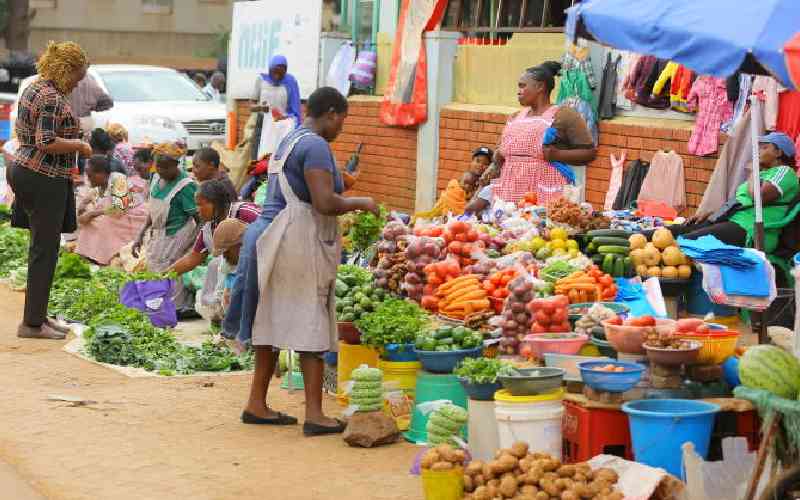“We have learnt from the mistakes that were committed during India’s demonitisation. “We will avoid those mistakes.” said Central Bank of Kenya Governor Patrick Njoroge yesterday.
It is those pitfalls that weighed heavily on the minds of many Kenyans as news of the unveiling of the new generation currency notes sunk.
Just like Kenya’s, Indian authorities led by Narendra Modi, the populist Prime Minister touted demonetization as offering a knockout blow to corruption and the networks that prop up illicit trade and fund terrorism.
Alas, they were wrong. The mopping up did not remove black money from the economy neither did it do a major blow to corruption. In fact, it precipitated a prolonged cash shortage that hindered India’s industrial production and massively suppressed its GDP growth rate by up to 2 per cent.
These are the fears Dr Njoroge sought to assuage. Central Banks create a stability in prices by managing currency and money supply to the economy. Kenya's economy (worth $63.40 billion in 2015) is not as vibrant or sophisticated and advanced as India's ($2.61 trillion) but nevertheless, a mishandled roll-out could be a real disaster to Kenya and the entire East Africa region. It is comforting that Dr Njoroge and his team are clear about the outcomes and the processes. For sure, Kenya’s economy- and to an extent, East Africa's- is in their hands.
Yet his is a mere promise: It could go wrong especially given the loud protestations and the litany of court cases lined up already.
New notes and coins should have been introduced into the economy far back in 2015 in line with the 2010 Constitution. That deadline was missed severally because of tender disputes – not unusual for a public project with such huge stakes. The protracted court battles ended last year giving way to the Central Bank of Kenya to issue new generation coins. That went on without much fuss.
The release of the new generation notes during Madaraka Day celebrations on Saturday, has kicked up a huge storm with what image to put on the notes being highly contentious. The 2010 Constitution disallowed the placing of anyone’s image on the face of the notes. Previously, the currency bore the portraits of former President Daniel Moi and Founding President Jomo Kenyatta.
The present debate centres on whether President Kenyatta’s statue – part of the Kenyatta International Convention Centre architecture- as it appears on the new notes, is a portrait or not is unlikely to die down. That dispute is headed to the courts. We hope it will end soon to forestall any unease that a prolonged dispute could do to the economy.
Guiding that dispute should be what we stand to gain from the demonetization drive and the introduction of new currency. If done well and systematically, the benefits far much outweigh the disadvantages.
Besides cutting off illicit cash flows, the new generation currency seeks to have everybody take part in trade and commerce by taking cognizance of the rights of the minority. It is a novelty that the new banknotes bear features that make them easily recognisable by the visually impaired.
The advanced security features will make it easier to tell the difference between fake notes and genuine ones especially at a time when Kenya is increasingly becoming a gold and counterfeits' paradise.
The new notes have a watermark, and a security thread that changes colour from red to green with additional rainbow colours for Sh200, Sh500 and Sh1,000. There will also be a golden band on the back to show the denomination.
There are those those who think that the removal of the Sh1,000 notes from circulation is a big score in the war on corruption. From the Indian experience, they could be wrong.
Speculation is rife on the amount of money being hoarded in personal vaults following stringent measures introduced in the banking sector to curb illicit flow of cash and money laundering. According to CBK data, Kenyans were holding Sh216.4 billion in cash across the country as at February.
Stay informed. Subscribe to our newsletter
How to get this cash undetected into the formal financial ecosystem is a challenge.
Yet this act could spell a windfall for the Kenya Revenue Authority as it pounces on those converting huge sums for what is due to it.
That much said, history often repeats itself and hopefully, CBK learnt much from India's experimentation and that it will save the economy the trauma of a demonetization debacle.
 The Standard Group Plc is a
multi-media organization with investments in media platforms spanning newspaper
print operations, television, radio broadcasting, digital and online services. The
Standard Group is recognized as a leading multi-media house in Kenya with a key
influence in matters of national and international interest.
The Standard Group Plc is a
multi-media organization with investments in media platforms spanning newspaper
print operations, television, radio broadcasting, digital and online services. The
Standard Group is recognized as a leading multi-media house in Kenya with a key
influence in matters of national and international interest.
 The Standard Group Plc is a
multi-media organization with investments in media platforms spanning newspaper
print operations, television, radio broadcasting, digital and online services. The
Standard Group is recognized as a leading multi-media house in Kenya with a key
influence in matters of national and international interest.
The Standard Group Plc is a
multi-media organization with investments in media platforms spanning newspaper
print operations, television, radio broadcasting, digital and online services. The
Standard Group is recognized as a leading multi-media house in Kenya with a key
influence in matters of national and international interest.








